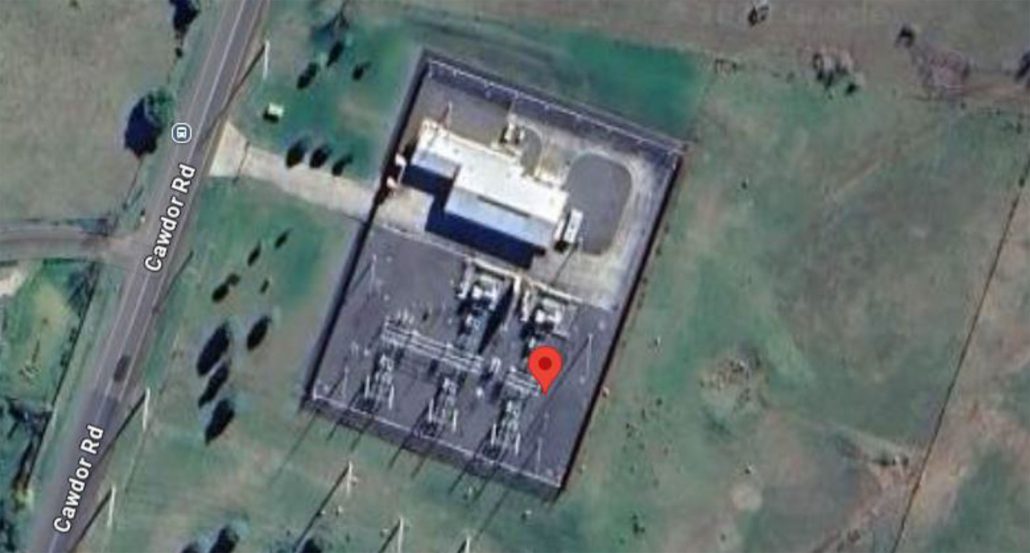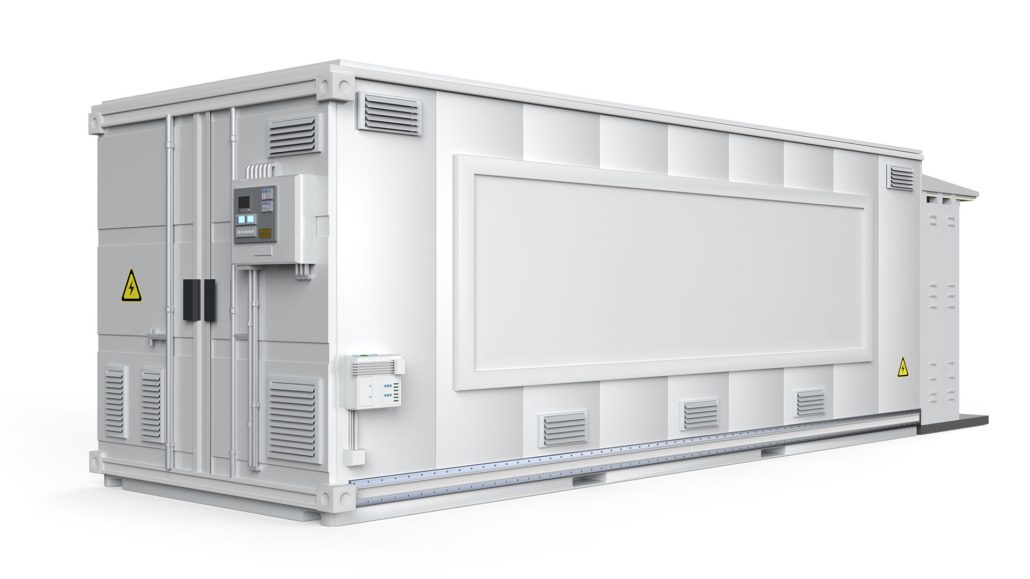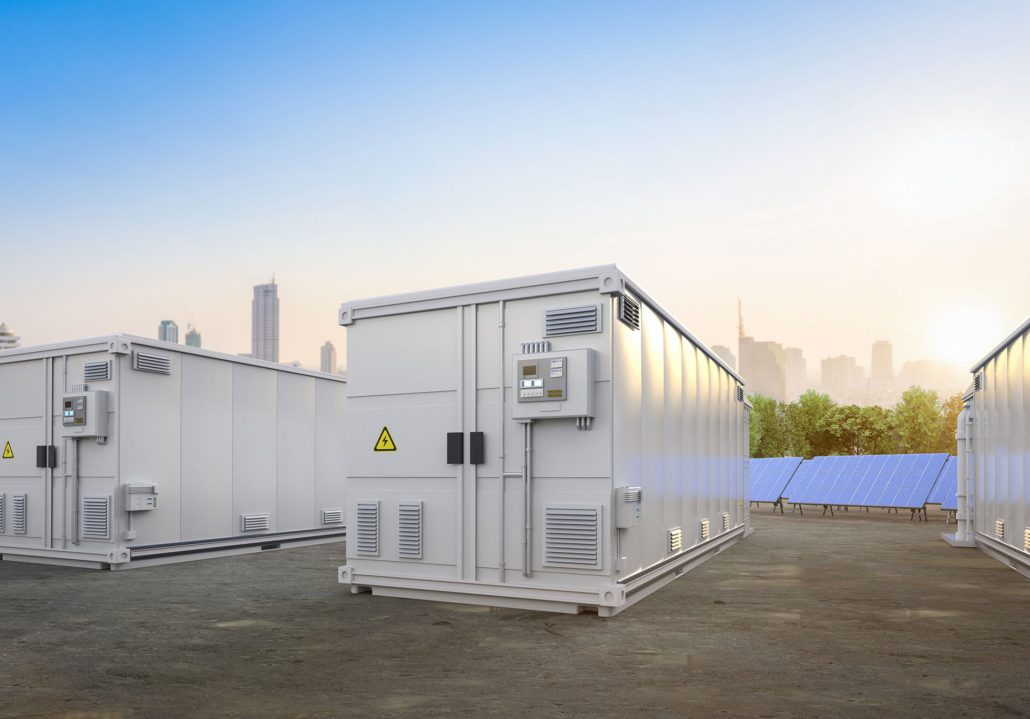Proposed Battery Energy Storage (BESS) System in Cawdor
Ausconnex is proposing a medium voltage (MV) BESS which will be located on the site of the existing transmission substation at 275 Cawdor Rd, Cawdor. See site map image below.
Building the BESS within the existing substation site uses land that is already set aside for this purpose and avoids the need for additional transmission lines, minimising environmental impact.
Aerial view of the Cawdor Substation and proposed MV BESS site
Upcoming site investigations in your area
The Ausconnex team has begun preliminary studies in your area. This includes using noise loggers (photo below) to measure background noise and assess noise sensitivity in the areas surrounding the proposed BESS.
You may see our team on-site as we carry out this important work. These investigations will not impact your electricity supply.
This work will continue over the coming weeks and the findings will help compare noise from equipment and activities during construction and operations and determine if noise mitigation measures are needed.
Have Your Say
As a valued community member, we invite you to ask questions or share your feedback on the proposed works before the Development Application (DA) is lodged with Camden City Council in early 2025.
Following this, Council will publicly notify surrounding landowners about the DA. We will continue to keep you updated throughout the project.
Please contact us at batteries@ausconnex.com.au or 1800 955 224 if you would like to make any comments on the proposed project at this stage.
Photo example of a noise logger used to measure background noise level
BESS stands for Battery Energy Storage System, as it consists of one or more batteries that store electrical energy for
use at a later time. This stored energy can then be drawn upon as needed, to meet various demands for power.
The proposed BESS will provide localised energy supply, support the growing demand in energy resources, and;
- Provide reliable power supply to customers now and in the future;
- Improve service reliability and provide grid support by reducing the risk of power disruptions;
- Support the energy network benefiting customers and enabling improved grid resiliency and;
- Enhance the energy sustainability ecosystem by storing excess solar generation.
A BESS, which generally looks like a set of shipping containers that are about three metres high, is comprised of four key components:
- Battery packs – a set of modules that turn chemical energy into electricity, which, in turn, make up the battery pack.
- Battery management system – BMS: Which ensures the safety of the battery system by monitoring and measuring the condition of the modules.
- Inverter or power conversion system – PCS: Which shifts the direct current ( DC ) generated by the batteries to alternating current ( AC ) that goes into the electricity grid and vice versa, allowing for charging and discharging.
- Balance of Plant – BoP: Which is the electrical equipment enabling connecting the BESS to the grid including transformers, switchgear and cables.
The BESS proposed at Penrith may be partially visible from the street, however, the surrounding industrial and other existing built structures and vegetation screening would limit visibility of the proposed infrastructure.
- Grid reliability and stabilisation – the BESS can absorb or release electrical power almost instantly, providing valuable services in balancing power supply and demand.
- Renewable energy integration – a BESS can store excess energy generated from renewable sources like solar during periods of low demand and release it during peak demand times. Ensuring a continuous and reliable supply of renewable energy even when the sun isn’t shining.
- Flexibility to dispatch energy – During natural disasters or heat waves when the grid is under stress, the BESS will be able to provide grid support, enhancing resilience to ensure the power stays on.
- Cost efficiencies – by discharging stored energy during peak demand periods, the BESS can help reduce the need for expensive peaking power plants, leading to potential cost savings for consumers on their power bills.
- Environmental benefits – by integrating renewable energy more effectively and decreasing dependence on fossil fuel-based peaking plants, BESS contributes to lower carbon emissions and a cleaner environment.
What is a BESS?
A Battery Energy Storage System – BESS – is an advanced technology that captures, stores and distributes energy from both renewable energy such as solar and wind, and non-renewable sources, making it available when needed. It supports the electricity grid by providing a reliable, efficient power supply.
What are the benefits of a BESS?
- Delivers a reliable power supply
- Improves service reliability and delivers grid support by reducing the risk of power disruptions
- Enhances grid efficiency and provides support to the grid during peak demand
- Enhances energy sustainability by storing excess solar energy for use when it’s needed
Will the BESS generate an electric and magnetic field?
Electromagnetic Fields (EMF) are created whenever there is a difference in voltage (which forms electric fields) or when electricity flows through wires or devices (which forms magnetic fields). Construction of the BESS will follow strict Australian safety standards and guidelines, ensuring it operates safely and effectively. The EMF levels are expected to be very low and within safe limits.
To further ensure safety, we will conduct detailed assessments of the potential impacts on nearby areas and sensitive locations as part of the Environmental Impact Statement (EIS). This assessment will help us understand and mitigate any possible risks related to EMF exposure.
What are the possible fire risks for grid-scale batteries?
The design and installation of the BESS will follow Australian safety standards. An advanced Battery Management System will ensure operation is within safe limits and will be supported by an array of sensors and fire suppression systems to reduce fire risks. Fire & Rescue NSW are now engaged with Ausconnex as part of developing a fire safety study.
How much noise will the BESS generate once operational?
The local area around the project, including the Penrith Substation, railway, and nearby roads, already experience some level of noise.
Once operational, the BESS will adhere to industry noise regulations. A detailed noise and vibration study will be conducted as part of our Environmental Impact Statement (EIS). This study will assess potential noise impacts during both the construction and operational phases and propose measures to mitigate any identified noise issues.
Will there be a lot of noise and dust during construction?
During construction, work will take place on weekdays from 7am to 6pm and on Saturdays from 8am to 1pm.
A study on noise and vibrations will be included in our Environmental Impact Statement (EIS). This study will examine the noise and vibrations during both the construction and operation of the BESS. Based on the findings, we will recommend ways to reduce any noise and vibration issues in the area. The construction is expected to last around 18 months.
Will construction take place at night?
We’ll be working during regular hours (Monday to Friday from 7am to 6pm and Saturdays from 8am to 1pm) to build the BESS. During construction, we’ll keep noise levels down as much as possible.
Will there be many heavy vehicle movements during construction?
Building the BESS will involve some heavy vehicle movements around the site. Other materials, plants, and equipment might also need heavy vehicles for delivery.
Once operational, the BESS will need very little maintenance, so traffic impacts will be minimal.
Before construction starts, a traffic assessment report and an application to Penrith City Council will be needed if there are plans for road closures or pathway closures.
During construction, traffic impacts will be managed with a Construction Environmental Management Plan (CEMP) or a Traffic Management Plan (TMP).
As part of the Environmental Impact Statement (EIS) stage, a traffic and transport impact assessment will be done to understand the potential traffic, safety risks, and impacts during the project’s construction, operation, and decommissioning. This assessment will look at the capacity of key access roads, the impact of large vehicles, and how project traffic might affect road safety.
I have solar on my roof, how will the BESS affect my usage and what I give back to the grid?
If you have solar on your roof, any excess energy created will continue to feed back into the grid, which will include the medium voltage (MV) BESS at the Penrith substation. The energy stored at the MV BESS will be used to discharge energy back into the network when demand is needed.
The proposed HV BESS, a State Significant Development, requires NSW Government approval. A Scoping Report will be submitted to the Department of Planning, Housing and Infrastructure by the end of this year. Following this, an Environmental Impact Statement will be prepared and exhibited publicly, inviting community members and stakeholders to provide feedback, expected to be in late 2025.
For more information, please contact us at:
Email: batteries@ausconnex.com.au or Phone: 1800 955 224.
Acknowledgement of Country
Email: batteries@ausconnex.com.au
Phone: 1800 955 224.
ABN: 39 232 846 628







